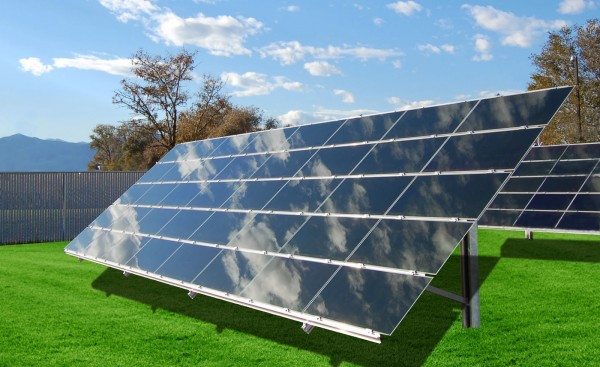Everywhere you turn, you can read articles about the booming solar energy market. From how solar is becoming a lower and middle class commodity to why conservative voters are in favor of clean energy policies, the recent growth of the solar industry is undeniable. But major utilities, including Duke Energy, are digging in their heels and working to slow the growth of solar and preserve their monopolies. (Read more about national utility campaigns to attack rooftop solar here.) Dukes long term business plan is also seriously lacking for uptake of the inevitable transition to clean energy. If Duke sticks with fossil fuels, theyll likely go the way of the dinosaur.
New Dawn for Solar
Solar is projected to become the dominant electricity source around the world according to Deutsche Bank in a recent report. In many countries, solar has already reached grid parity–meaning consumers pay the same or less for solar as they would for electricity on the grid. These advancements are allowing solar to compete with conventional fuels like coal, nuclear and gas to become the main energy source powering our homes, schools and businesses. Deutsche Bank projects that solar will generate $5 trillion in global revenue over the next 15 years, allowing it to displace fossil fuels and make up 10% of the global electricity market.
This same trend is occurring in Duke Energys home state of North Carolina. A recent report by Duke University calculates that in the past few years the solar industry has invested more than $2 billion in building about 150 utility-scale solar farms in North Carolina.
The recent spike in solar investment is primarily due to economics. The price of solar has dropped significantlyabout 80% since 2008, and continued growth and investment lead most to believe the price will only continue to fall. Market improvements and innovation in battery and storage technology will further increase solars affordability and accessibility to all types of energy customers.
So if solar power is booming, why is the largest electricity utility in the country–Duke Energy–lagging so far behind and trying to reverse progress?
Dukes Plan to Block the Sun
Duke seems to believe that a few attention-grabbing headlines on new solar projects will distract residents from their real dirty business of inadequate solar growth and attacks on critical clean energy legislation.
Every year, Duke Energy publishes a long term business plan (known as the Integrated Resource Plan or IRP) where the company projects how it plans to meet future energy demand and growth over the next 15 years. Unfortunately, Dukes most recent IRP does not include a commitment to significant solar investments. The utility projects its renewable energy capacity will be a measly 4% in the next fifteen years. (Its currently less than 1%.)
This is far behind what is possible and needed for the Carolinas. In a Greenpeace report titled Charting the Correction Course, we estimated that Duke could economically transition to 33% renewable energy and energy efficiency over the next twenty years. If Duke transitioned to cleaner, cheaper energy, there would be huge cost savings for both ratepayers and the company. We estimated that customers would see a savings of 57% on their electricity bills over the next twenty years compared to Dukes proposal for enormous increases in electricity costs. Our cleaner, cheaper plan could also reduce long-term debt for the company by 75%. [Note: The Charting the Correction Course report was published in 2012 and uses numbers from Dukes 2012 IRP, but since significant changes havent been made for this years data, the cost estimates are comparable.]
To make matters worse, instead of increasing its investment in solar, Duke has continually worked to block customers access to the sun. Last year, CEO Lynn Good announced plans to attack the states critical net metering program that allows customers to be fairly compensated for the excess solar power they provide to the grid. Just last week, we learned that Duke wants to drop solar rates for solar farm developers by 15 percent, which could significantly slow the solar industrys growth. To top it off the company is working to protect its monopoly status by promoting false claims about the impact solar would have on ratepayers to prevent third party energy sales policies from progressing in their regulated territories. These false claims have been debunked time and time again. All of these attacks on key solar policies show Duke Energys true colors on solar energy.
Take Action
All electricity customers in North Carolina deserve access to affordable solar power. Today there is a bill before the NC Legislature called HB 245–The Energy Freedom Act–which would bring competition to the electricity sector and make no money down solar available to all. Duke should be leading the way for more access to solar in our state, not continually trying to prevent critical solar laws. If you live in North Carolina, contact your legislator and tell them to listen to the people of NC, not Duke Energy. Ask them to support the Energy Freedom Act.
To learn more about the Energy Freedom Act, check out this blog post about a recent hot air balloon flight Greenpeace did in North Carolina to send the message that solar works for all.





